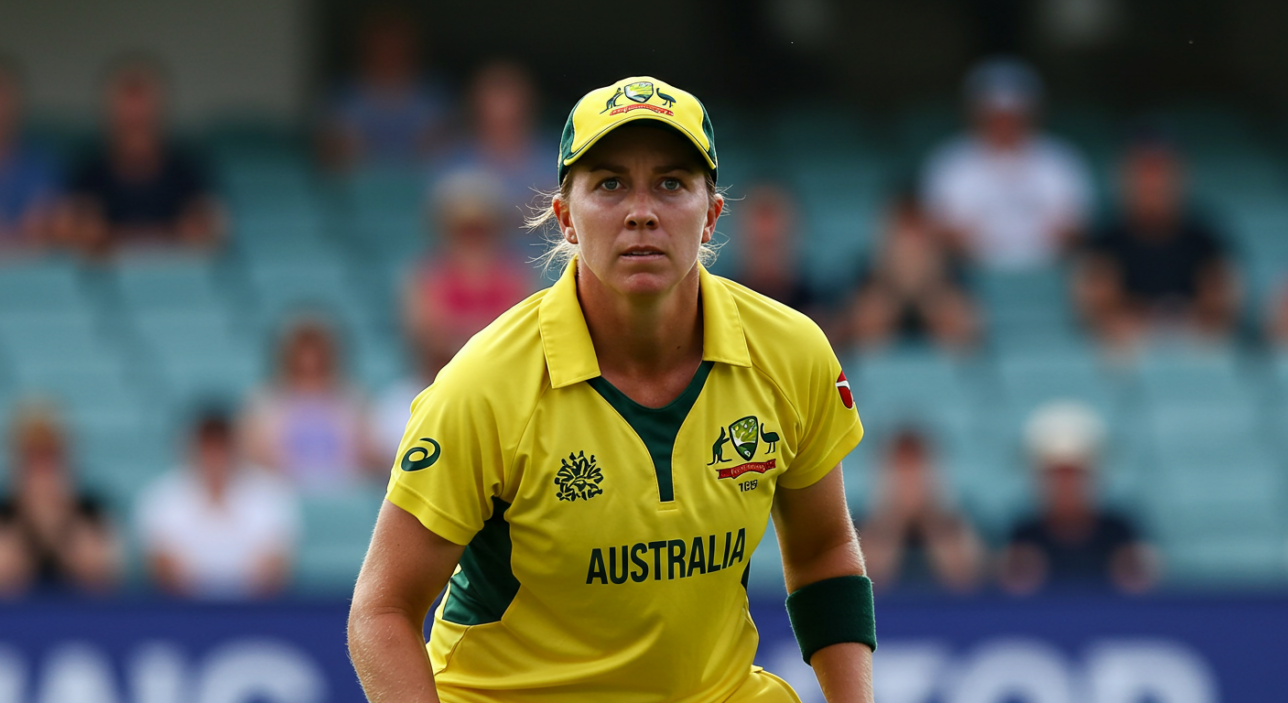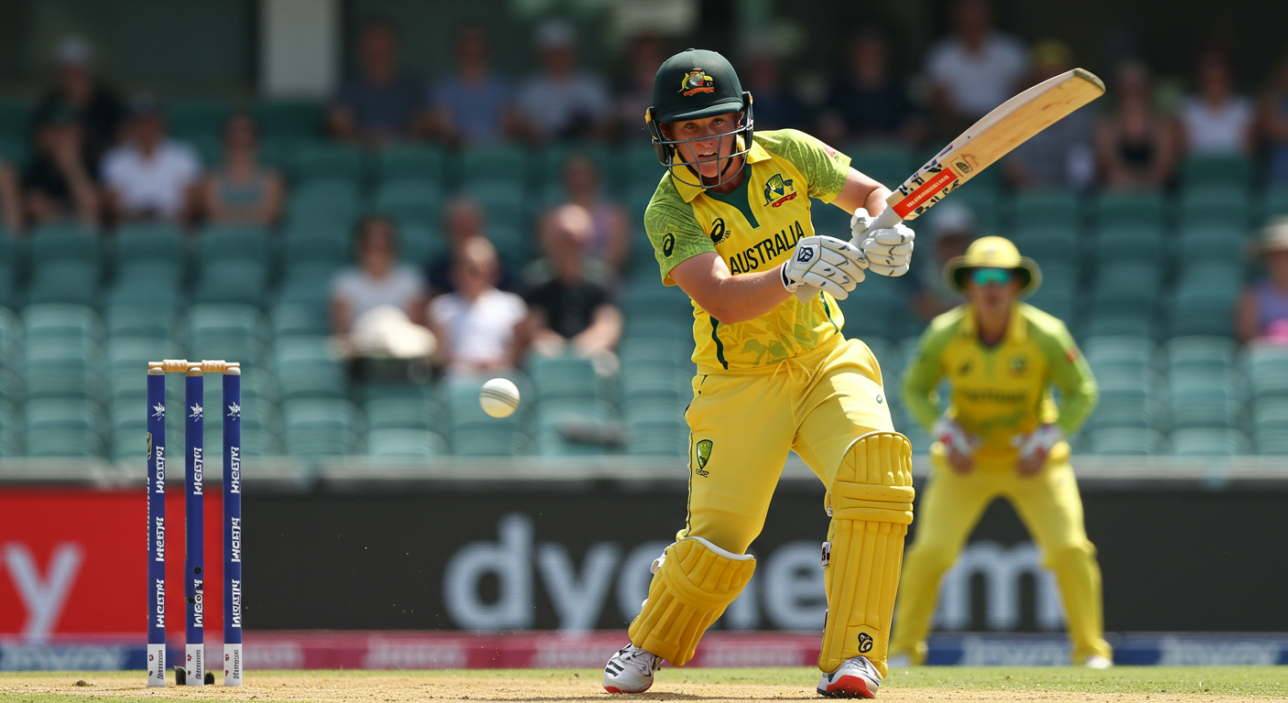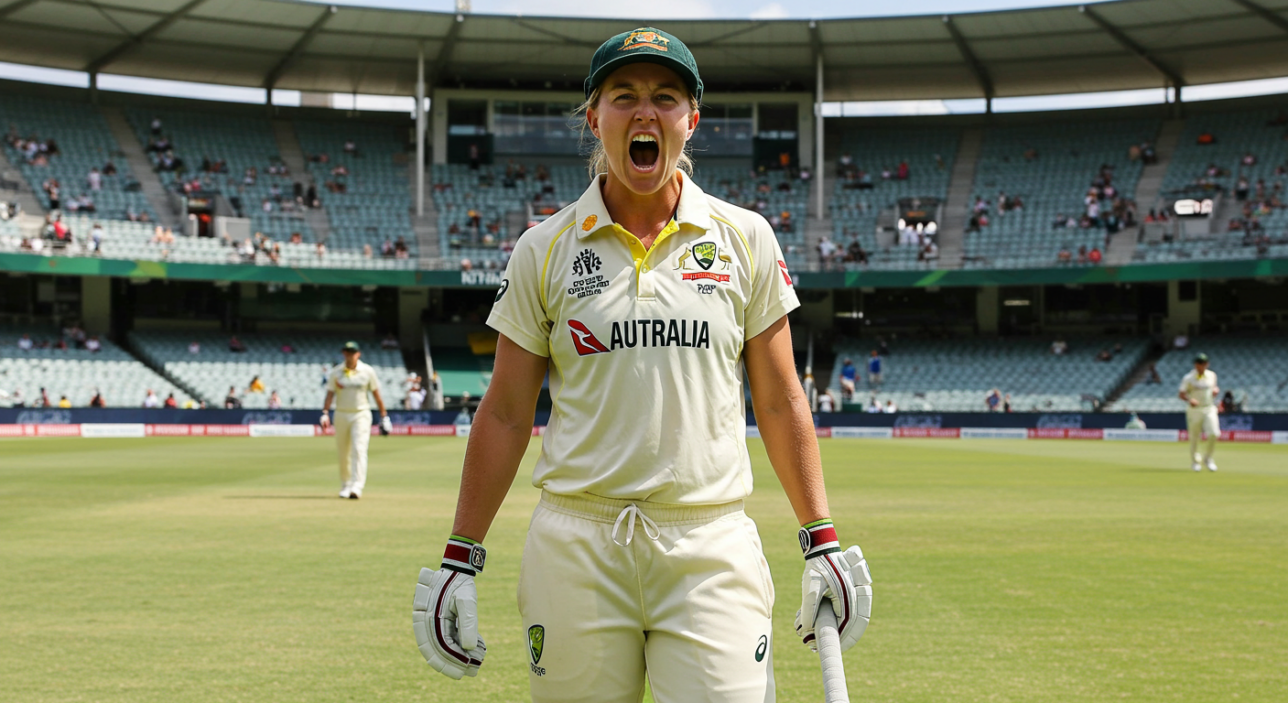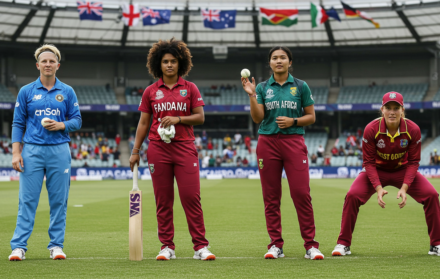
Meg Lanning: How Australia Built a Dynasty Under Her Leadership
There are leaders who inspire with presence, others with performance. Meg Lanning did both—but neither was her defining feature. What distinguished her was the way she engineered a cricketing machine that didn’t just win—it sustained excellence across formats, tournaments, and generations. Australia’s dominance in the Lanning era wasn’t just impressive—it was systematic, intentional, and ruthlessly efficient.
From the outside, Lanning didn’t appear to lead with emotion or showmanship. She was composed, bordering on inscrutable at times, with a poker-faced poise that gave little away. But beneath that control was a deeply strategic mind, one that understood that the foundation of a dynasty wasn’t just big wins, but repeatable processes. Tactical flexibility, clear role definitions, high-performance culture, and trust in execution—these were the pillars on which her teams stood.
What followed under her tenure as captain was unprecedented: five ICC titles, multi-format Ashes series wins, world-record streaks, and the transformation of Australia’s women’s cricket team into the most formidable side in global sport. Yet throughout, Lanning never placed herself at the centre of the story. She led through clarity, not volume; precision, not noise.
This article is not simply a tribute to silverware. It is an examination of how Australia became not just a great team, but a benchmark—and how Lanning’s leadership shaped that transformation with a quiet certainty that often looked like inevitability, but in fact required enormous foresight and daily discipline.
A Captain at 21: Thrown In, Never Overawed

When Meg Lanning was handed the captaincy in 2014 at just 21 years old, it wasn’t a ceremonial passing of the torch. Jodie Fields’ sudden retirement left a gap that needed immediate filling, and Lanning, already earmarked for leadership due to her maturity and batting authority, was the logical choice. Still, logic doesn’t guarantee success—and leadership at that age, in a dressing room filled with experienced names, is rarely smooth.
But Lanning never tried to force command. She didn’t need to. Her authority came from the same place as her batting: timing, clarity, and ruthless efficiency. Within a year of taking the role full-time, she had led Australia to the final of the 2016 T20 World Cup, and though they fell short to a resurgent West Indies, the blueprint was taking shape.
She understood that success wouldn’t come from replicating past eras. The modern game demanded sharper tactics, deeper batting, and a team culture that could withstand the scrutiny and intensity of year-round cricket. She began to build around that understanding—working closely with coach Matthew Mott to create a high-trust environment, where preparation and adaptability would matter as much as raw talent.
That trust began with selection. Lanning wasn’t afraid to back youth. She helped usher in players like Ashleigh Gardner, Annabel Sutherland, and Tahlia McGrath—not just as fringe options, but as core parts of the long-term system. It wasn’t about just having depth—it was about trusting depth in high-stakes situations. In Lanning’s Australia, no player was made to feel temporary.
Equally, she didn’t seek to dominate team dynamics. Her leadership was functional rather than charismatic. Yet that approach worked. Teammates have often described her as direct, unflappable, and deeply respected—not because she demanded loyalty, but because she consistently delivered hers.
Australia’s dynasty didn’t begin with a speech. It began with a set of standards. And from the moment Lanning took over, she never allowed those standards to slip.
Building the Machine: Australia’s Rise from Contender to Certainty
Australia were always among the top sides in women’s cricket. But under Meg Lanning’s captaincy, they became something else entirely—a team whose success was not merely expected, but pre-programmed. They didn’t just dominate—they did so with a level of composure, consistency, and clinical execution that felt almost uncrackable. That shift didn’t happen overnight, and it didn’t rely on one or two stars. It came from Lanning’s ability to shape the system around her into something more than the sum of its parts.
Central to that transformation was the clarity with which roles were defined and adhered to. Lanning ensured that every player in the XI, from No. 1 to No. 11, knew what was expected of them—not just in ideal conditions, but in crisis scenarios. That enabled Australia to play with freedom, not fear. When Alyssa Healy attacked in the Powerplay, she did so knowing the middle order could absorb pressure if needed. When Gardner or McGrath came in late, they didn’t have to manufacture a role—they executed one they had prepared for.
What stood out was how rarely the side appeared to panic. Even in tense chases or low totals, there was an embedded calm that came from leadership that trusted the process rather than reacting to every scoreboard fluctuation. Lanning, typically at slip or mid-off, was never demonstrative. But her field placements, bowling changes, and use of match-ups consistently tilted matches in Australia’s favour before they reached boiling point.
The run of dominance from 2018 to 2023 included multiple ICC titles, a 26-match ODI winning streak, and a record-setting 2022 ODI World Cup campaign in which they dropped just one match across two years. What made it more impressive was the absence of complacency. Australia never looked like a side playing to protect legacy. They looked like one building a new standard with every outing.
Off the field, Lanning managed personalities with care. In a squad that included outspoken characters like Healy, intense competitors like Jess Jonassen, and rising stars with different temperaments, Lanning allowed room for individuality without ever letting the team ethos fragment. She didn’t need to be the loudest voice, but she was the final one. Her restraint created space for confidence to grow around her.
By creating that culture—of stability without rigidity—she ensured that when matches became tense, her players didn’t look to her for orders. They already knew the plan. Her success as a leader wasn’t built on moments of genius. It was built on systems that functioned so well that brilliance became structural.
The Bat as the Blueprint

Meg Lanning’s captaincy record is extraordinary. But her own batting, even at its quietest, remained one of the clearest indicators of why Australia were so successful. She led from No. 3—the most exposed, most consequential position in a side known for setting daunting totals and chasing targets without fuss. And she did so with an approach that embodied her leadership style: precise, flexible, unfazed by chaos, and devoid of unnecessary risk.
Her strike rotation was exemplary. She didn’t always start quickly, but she rarely stalled. Lanning absorbed pressure in a way that allowed those around her—Mooney, Perry, Healy—to play freely. When Australia chased big totals, she rarely looked hurried. She understood tempo like few others. When they defended scores, she was often the innings’ anchor, holding one end and forcing opposition bowlers to earn every over.
What stood out was her ability to adapt to different match contexts. Her century against England in the 2022 Ashes ODI series was not just technically sound—it was deeply pragmatic. She batted through wickets falling around her, counter-attacked at just the right moments, and closed the game with the kind of calm that felt rehearsed but never robotic.
She wasn’t an all-format slogger. Nor a player reliant on purple patches. She built her reputation on the repeatable—the ability to turn 20 into 50 into 80 without changing gear too obviously, and without surrendering control. That rhythm became Australia’s rhythm. Her innings rarely looked violent, but they often created the platform for violence later.
In a team full of big-hitters, Lanning was the ballast. Her wicket was the one teams celebrated hardest—not because she was the flashiest, but because she was the hardest to dislodge. And in the architecture of a dynasty, she was the beam that never cracked under weight.
Finals, Pressure, and the Art of Repeating Greatness
There is a distinct difference between being a great team and being a great team in finals. Meg Lanning’s Australia were both. From World Cups to multi-format Ashes deciders, her side not only made it to the business end of tournaments—they elevated in those moments. And if there is a common thread to Australia’s golden era under her leadership, it is this: they were never outplayed on the biggest day.
What makes this achievement more remarkable is the context. As Australia’s dominance grew, so did expectation. And with each successive tournament, the pressure didn’t ease—it multiplied. Every final became a test not just of skill, but of the team’s ability to live up to their own standard. Under Lanning, they didn’t just survive that pressure—they looked like they had trained for it.
Take the 2020 T20 World Cup final at the MCG. In front of 86,000 spectators—a record for a women’s sporting event in Australia—the stakes were immense. India had momentum. Australia had history on their side, but also the burden of hosting. The team didn’t flinch. Healy and Mooney provided fireworks at the top. Lanning’s field placements, use of spin, and subtle shifts in the powerplay turned what might have been a tight contest into a processional win.
But her influence in finals wasn’t always tactical. It was tonal. She set the mood. She didn’t let pressure trickle down the chain. In the 2022 ODI World Cup final, it was Alyssa Healy who made headlines with her 170, but again, the scaffolding was Lanning’s. She set the tempo early, managed the innings when wickets fell, and ensured bowlers bowled to fields they believed in. There were no panics. No overcorrections. Just structure under strain, and a captain who ensured that finals were treated like just another stage—never a separate story.
Managing the Machine: Injuries, Breaks, and Staying Hungry

One of the hardest things to do as a long-term captain is to stay emotionally and physically invested in a team that wins a lot. Success, ironically, breeds burnout. Lanning was never outwardly jaded, but by the time 2022 ended, it was clear she needed time. She stepped away from cricket in August 2022 citing personal reasons, missing Australia’s tour of India and raising quiet questions about the sustainability of modern cricket’s demands—even for someone who made leadership look effortless.
That she took the break at the height of her powers was telling. Lanning wasn’t declining. She was simply aware that mental health, privacy, and energy couldn’t be outsourced to legacy. And when she returned in 2023, for the T20 World Cup in South Africa, she looked recharged. Not louder. Just sharper.
Her ability to pause, recalibrate, and still perform at the highest level is a reminder that dynasties don’t run on autopilot. Behind the sustained excellence was someone who knew when to lead, when to delegate, and—crucially—when to step away. That kind of self-awareness is rare in elite sport. It is even rarer in leaders whose teams have done little but win.
During those periods when she was absent, Australia remained competitive. But there was a discernible shift. The side still had firepower, still had plans, still had clarity. But what it lacked was the sense of inevitability that Lanning brought to a chase or a tense defence. Her reappearance in the XI never required drama. It simply reset the mood. When she walked out to toss, Australia felt whole again.
That’s the mark of legacy—not just results, but the quiet belief a captain carries with her, even in silence. And as Australia continued to dominate, the wider cricket world began to understand: this wasn’t just a golden generation. It was a system held together by one of the most composed leaders the game has seen.
Legacy Without Noise, Impact Without Question
When Meg Lanning officially stepped away from international cricket in 2023, the reaction was more than reflective—it was reverent. For over a decade, she had stood at the centre of Australian cricket’s most consistent era of success. Yet it never felt like a cult of personality. There were no chest-thumping declarations, no personal narratives driving the headlines. Instead, there was stability, strategy, and a level of excellence so sustained it often risked being taken for granted.
That’s part of what makes her legacy so distinctive. Lanning captained in a way that made other brilliance possible. She provided a scaffolding for Healy’s aggression, Mooney’s composure, Gardner’s explosiveness, and Perry’s reinvention. She let the team expand around her without demanding to be its focal point. When Australia won—and they often did—she rarely centred herself. But when they stumbled, she was always the first to absorb responsibility.
And yet, her individual record matches any of her peers: over 8,000 international runs, 17 ODI centuries, multiple ICC trophies, and captaincy records that may never be surpassed. She did it while managing rising commercial demands, evolving playing schedules, and a generation of younger players raised in a fully professional setup—players who, in many cases, saw Lanning not just as a captain, but as the benchmark.
She led quietly, but she led thoroughly. In doing so, she reshaped what a modern captain could be: less about image, more about infrastructure; less about volume, more about vision.
Meg Lanning: The Dynasty That Didn’t Need to Shout

It’s easy to remember dominance by its numbers—how many trophies, how many wins, how many finals. And in that sense, Meg Lanning’s Australia will be remembered for their totals, their streaks, their record margins. But what made their success truly remarkable wasn’t just how often they won—it was how predictably they did so, and how sustainable that winning became under her leadership.
Lanning didn’t build a team. She built a system. One where the batting line-up could lose a wicket early and still post 280. One where spinners and seamers worked in tandem across formats. One where depth was not insurance but design. And one where no single player, including herself, was bigger than the process. That’s not a cliché—it was a genuine organising principle of her captaincy.
Her composure was never a façade. It was a tool. She understood that the captain didn’t need to be the loudest presence on the field to be the most influential. Her field placements, her strategic flexibility, and her trust in players all reflected a long-term view of leadership, not a reactive one. That’s why her teams didn’t just win finals—they controlled them.
In an era where sport increasingly rewards the spectacular, Lanning offered something more durable: structure, trust, and repeatable excellence. She showed that dominance does not require dominance of personality, that leadership can be deliberate rather than dramatic, and that long-term success stems not from slogans or surface culture, but from deeply embedded systems that allow great players to perform with freedom and accountability. What she leaves behind is not just a winning record, but a blueprint for how to win well—and how to keep doing it, long after the headlines fade.





